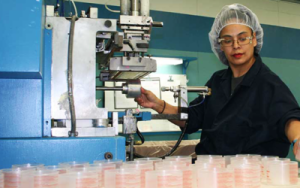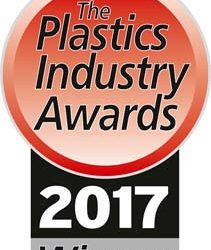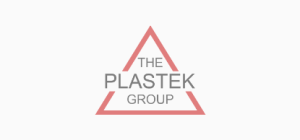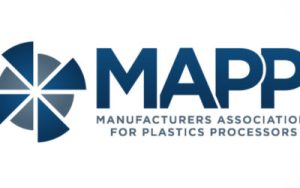Description of Best Practice, TPM – Total Productive Maintenance
“Plastek SMD has renewed energy around TPM! Total Productive Maintenance (TPM) is a continuous improvement program that focuses on improving the equipment, investing in maintenance programs, equipment enhancements and employee training. This proactive process looks to keep the equipment in like new condition by teaching the employees to develop and maintain cleaning and inspection standards.” – (Becky Boleratz, Plastek Spectrum Molding Division (SMD) TPM Coordinator)
TPM is implemented and practiced diligently throughout every one of The Plastek Group’s operation sites, in the U.S., the U.K., Mexico and Brazil. Described here are some examples of how Employee Engagement takes place and its positive outcomes at three Plastek U.S. plants.
How Employees are Motivated to Engage:
One of the first signs of employee motivation to engage in their work day, is through nomination. TPM Teams are made up of employees in a variety of departments. For example: 2 Machine Operators, 1 Quality Inspector, 1 Assembly Maintenance Techs, 2 Molding Processors, 1 Assembly Maintenance Supervisor, 1 Assembly Engineer, and a host of support help. At Plastek a conglomerate of Employees from all shifts are nominated by their supervisors and inducted into the TPM team, after successfully completing a Plastek lead TPM Training Class Amy Hoffer, Plastek Consumer Products Division (CPD) TPM Coordinator and Becky Boleratz Plastek SMD TPM Coordinator, explain that The Plastek Group is collaborating all of its U.S. Divisions to develop a finely tuned Plastek TPM training Class. This training class will educate our selected employees on how to engage in and correctly complete and identify the 7 steps to TPM implementation. This training is universal and could be applied to any setting such as, manufacturing, medical , or any business. Each of the 7 steps consists of a 1 hour in class explanation, which the employees can then turn around and perform hands on, and spread their knowledge, teaching other employees what to look for. Examples of the 7 steps are : Step 1 – clean the press like new, accomplished by a refresher course of the 5s process. 5S – Sort, Set in Order, Shine, Standardize, Sustain. Step 2 – organize documentation, Step 3- identify visual controls, and so forth with steps 4 – 7. Training also prepares the team members with the knowledge needed to be able to create influential checklists for the A.M. teams and P.M. teams and per project.
“The best ideas come from the conversations between the ones who are looking for the improvements first hand. “ – Keith Mims
We mentioned, TPM team members are nominated from a mix of personnel. Keith Mims, Plastek HMD Operations Manager explains the positive presence of a second sign of employee motivation to engage, with creating Cross Functional Teams. Various maintenance needs become assignments, and assignments become dedicated teams, as they are made up of the people who operate the machines first hand. Individuals are given leadership roles on a TPM team level. They hold their meetings onsite at the machines in order to best evaluate needs and progress of their work, in brainstorm sessions. These ideas are then presented formally in shift meetings with the TPM teams and the assembly or maintenance managers, who will then delegate and start the work orders per approvals. Greg Madru, Plastek CPD Quality Manager, supports this theory of giving ownership to the individuals who run the machines, because they know it best, and it gives more responsibility to the ones who are in the trenches. These floor employees, part of a TPM team can now participate, identify and present their ideas, which creates communication (Plastek’s 2019 MAPP Best Practice) to begin implementing important operation and production needs. While we speak about employee motivation for engagement and the teams’ make up through ownership and new responsibilities, Madru and Steve Craig, Plastek CPD Molding Manager are just 1 example of management support. Madru and Craig, they participate on an initial clean team, cutting through the grease, putting themselves in their employees’ shoes. Our Managers are leading by example and as Hoffer comments,
“Bringing together different levels of management and departments, you get a lot of miles out of this strategy. Management being elbow to elbow with the front liners and supporting TPM members, is a morale booster.”
Just at Plastek SMD alone, currently in 2020, SMD TPM has 14 Teams with more than 60 employees engaged. TPM participants are given the role to pick their leaders and be the speaker representing them at daily shift meetings and even weekly project review meetings. At all Plastek TPM meetings, participation, and progress are held accountable as checklists are created by the TPM employees themselves, based on the needs of each project, and deadlines designated. These teams and leaders have the opportunity to share their voice and be heard. As ideas are heard and implemented, employee engagement is acknowledged and rewarded in a variety of ways amongst each Plastek division. Through praise and verbal accolades, luncheons and award presentations, and smooth working equipment, our TPM teams feel appreciated and it encourages the increase of employee engagement. Pictured above is an example of the 2020 SMD TPM campaign, outlining 7 pillars of TPM with 9 team captains and We have 3 cost savings projects that have been generated from team activities.
TPM Project Rise : Ready – Initiate- Strengthen – Enhance
- Autonomous Maintenance
- Preventative Maintenance
- Safety, Health & Environment
- Focus Improvement
- Supply Chain
- Quality
- Training
Realized Results & Proof of positive Employee Engagement through TPM Implementation:
Plastek has practiced TPM for many years and have reaped the benefits resulting from our dedicated employees and their engagement in the program, but Plastek is not the only one who benefits from these positives. The TPM program, designed to enhance the performance and longevity of our machinery throughout ware and tare has proven to also be an asset to our daily operations and to our employees, during the ware and tare of the current events Covid 19 has brought to 2020. TPM has prepared our personnel staff for these times, and Plastek is finding success in practicing the meaning of TPM every day. Total Preventative Maintenance. While our TPM team activities and resources have been affected some, because SMD had fluently practiced TPM before Covid 19 and implemented 5S procedures (marking on the floor of everything belongs- everything organized and everything having its place. Labels. Trash can, broom, what’s in drawers) good at maintaining performance of monthly audits, reviewing 5S behaviors and criteria’s – daily operations carried on as normal. You could say the accommodations to any restrictions such as meeting out on the floor with additional PPE and challenging the noise level as opposed to being in a conference room, was minimal interference and the most of our worries. Implementing additional safety precautions such as, identifying Jump out points of oncoming traffic, placing 6ft markings, and other things- was not a big learning curve. Boleratz states, that she can see and hear employee engagement taking place at Plastek. She says, “ – because employees are involved in training and involved in the team, they are learning about the press, what down time is- the impact on customers – the cost of material – cost of labor – By being engaged- they are active members of the success of that work cell and they are experiencing that there is more to coming to work than just boxing and stickering.” HMD- Production Record Broken- 1,000,000 pieces every shift. With Cross Functional communication, the Assembly Department & Warehouse Employees achieved success through engagement. HMD hit a output milestone with 1.1M produced in 1 shift. To celebrate D-shift was presented the below award for this achievement. This is a record output for a single shift for HMD. In addition, they also achieved 11 shifts in-a-row producing 1M+ parts each shift.
“ Our jobs are easier when the machines run better.” – Quote from HMD Employees
Keith Mims, HMD Operations Manager says, Employees see the wow factor in recent TPM’d equipment. The before and after results are recognizable by our machine operators and they are asking when it is their machine’s turn to undergo a TPM !?
January – October 2019 TPM Challenge at Plastek Hamlet Manufacturing Division:
HMD has realized a 28% increase in OEE since taking this TPM AM step 1 challenge. The pictures are better than words at showing the results of the “Deep Clean” that is part of AM Step 1. This is a real win for the team and now our other assembly operators are wanting their systems done this same way realizing that if the system runs more effectively that their jobs actually become easier. The machine in this project went from being the work cell to avoid, to being the system people want to work in! In addition to the increased output our TPM has shown other benefits and yielded creative thinking.
- Reduce or eliminate the use of moveable step ladders from the work cell by installing fold down steps (pic included in PP) and place them exactly where the operators need them to be most effective. This increases the safety in the cell and removes clutter.
- Engineered new safety lockout for the turret. We found that the turrets could be moved using “human” energy which made them dangerous to work/clean around. Earl Poston developed and simple yet effective clamp that eliminates the potential of this being a pinch point.
- Added lighting for under the turrets and installed see-thru doors so that anyone in the work cell can check on the workings of the equipment.
- Added lighting to different sections of the system to help our newer employees understand the different areas.
- Converted many of the older bolt or screws with thumb screws. This reduces the need for tools being needed to access different areas for cleaning or inspection.
Overall, the increase in OEE is what we targeted as a result, but we ended up with not only the OEE improvement, but ideas that will be used across all systems as we proceed through this process.
Plastek SMD Projects : Tool Room Projects : “Project Perfect”
Accomplishment: 1) Reduce Down Cavitation. Sustain & Improve current running cavitation rate of 96%.
Strategy: 2) TPM Implementation Efficiency Strategy : “Target Rows”- When identifying TPM Schedule, SMD implements a Target Row strategy to prioritize the TPM workload. Designated equipment in a “target row” will be focused on and completed, before moving on to the next “target row.” This strategy implements organization and grid like structure to ensuring that the hole shop gets TPM scheduled, and no piece of equipment is missed by skipping around from area to area on any given day.
Organization of Resources: 3) Equipment inventory- In multiple quantities of each, Spare “major ware” components for each machine are on hand and recorded in a barcode inventory system.







